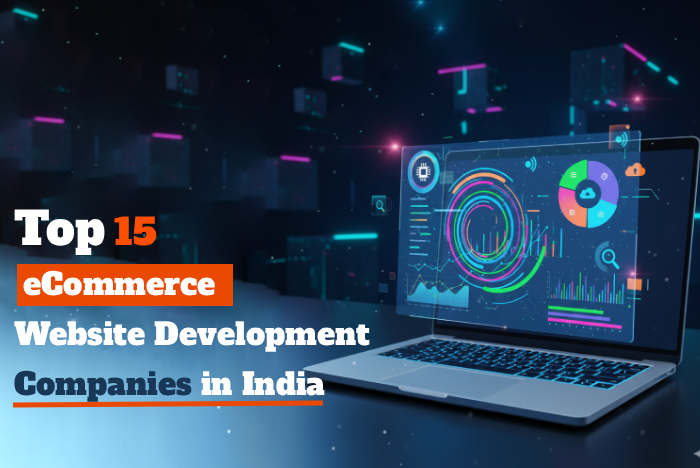Artificial Intelligence (AI) is not a concept of the future anymore, it is an element of the present and a factor that defines the future of the development of computerized software. To the development community, it is not only interesting to be aware of the trends around AI, it is also a way to ensure the longevity of their career, their productivity, and capability to create genuinely novel solutions.
By 2025, AI has not only become another tool but a component level redefining the way developers operate, which software they create, and what software intelligence actually entails.
This descriptive aspect will track the 5 most significant AI development trends most applicable to developers and indicate their implication and the potentials they create, especially in the booming AI development company in India market.
1. Generative AI proliferation and AI agents
Generative AI and especially Large Language Models (LLMs) and diffusion models are out of the hype cycle, but a new step in evolution is here to stay: AI Agents.
The development of generative AI: Now developers no longer simply interact with chatbots. They embed generative AI technique (such as GPT-4o, Gemini 2.0 Flash, Claude 3.5, and open-source models) into software to automate generation of content (including both text and images, code snippets and even music and video), synthesize data and power increasingly intelligent user interfaces.
Implications to Developers: This implies that developers will have to learn how they can effectively prompt such models (prompt engineering), enable them to perform specific tasks through fine-tuning, and incorporate their APIs with existing software systems. Writing line by line code is no longer the priority and replaced by staging AI models to complete more complicated tasks.
Opportunities: Creating AI-driven assistants for particular fields (e.g., legal document creation, summarization of medical reports), automated marketing content generators, or utilities that translate natural language commands into working code.
Rise of AI Agents: This is the future. AI agents are independent or partially independent AI software that can plan, reason, perform multi-step procedures, and learn from their environment. They can decompose a large goal into sub-goals, employ multiple tools (APIs, internal functions), and even correct themselves.
Influence on Developers: Developers will be building, maintaining, and deploying more and more of these agents. That entails learning things like agentic workflows, multi-agent systems, and how to declare tools and context for AI agents. Think of an AI agent that can retrieve data automatically from a database, analyze it, create a report, then send the report by email to stakeholders.
Opportunities: Automating sophisticated business procedures (e.g., customer service processes, supply chain optimization, data analysis pipelines), developing customized AI companions, or building AI-based systems that can deploy and maintain cloud infrastructure autonomously. Artificial Intelligence Development Company in India are making significant investment in developing agentic solutions for different industries, seeing their potential for high efficiency improvements.
2. Increased Developer Productivity through AI Coding Assistants
AI is fast transforming from a useful code auto-completer to an advanced pair programmer, revolutionizing the developer's workflow at its core.
AI-Assisted Code Generation and Completion: GitHub, Copilot, Cursor, Amazon CodeWhisperer, and other similar tools are making their way into the mainstream. They provide real-time suggestions, complete code lines or blocks, and even generate full functions or components given natural language descriptions or context around the code.
Impact on Developers: Developers are devoting less time to boilerplate code, syntax lookup, and routine work. This leaves mental capacity for higher-level architectural design, advanced problem-solving, and attention to distinct business logic. The productivity increases are dramatic, with reports of as much as 55% reduced development cycle and 88% boost in productivity for certain activities.
Opportunities: More projects can be undertaken by developers, delivered quicker, and more creative solutions explored. The focus now is on knowing what to construct and how to direct the AI, not on painstakingly writing each line.
Automated Debugging and Testing: AI software is now capable of creating detailed test cases from application specs, past data, and user pattern behavior. They are also capable of providing assistance in bug identification, recommending repair, and even visual regression testing in various environments.
Developer's Impact: This enhances the automation of the tedious and time-consuming QA process. Developers are able to identify errors early, resulting in more stable and reliable software.
Opportunities: Creating extremely stable apps with fewer bugs after releases, enabling developers to concentrate on feature creation.
Related Post: Business Benefits of Artificial Intelligence (AI)
3. Multimodal AI and Contextual Understanding
Where initial AI models tended to deal with one type of data only (text, images, etc.), Multimodal AI is shattering these limitations, making it possible for a more comprehensive understanding of data.
Handling Multiple Types of Data: Multimodal AI models are able to ingest and interpret data from multiple sources at once—text, image, video, audio, and even sensor inputs. For instance, an AI might interpret a video (images, sound, captions) to interpret the intent of a user.
Effect on Developers: Developing applications that engage the world more like human beings is now possible. Developers must deal with heterogeneous data streams, learn about data fusion methodologies, and create systems capable of benefiting from insights from various modalities.
Opportunities: Building richer, more natural user experiences (e.g., smarter assistants that both hear voice commands and see visual hints from a camera), more sophisticated content creation tools that pair text prompts with image examples, and more advanced monitoring systems that compare multiple streams of data to detect anomalies. Most AI development company in India are investigating multimodal AI for use in healthcare (e.g., interpreting medical images alongside patient notes), surveillance, and smart city projects.
4. Explainable AI (XAI) and Ethical AI Principles
With AI models becoming increasingly potent and self-governing, the demand for transparency, accountability, and moral considerations intensifies manifold. Explainable AI (XAI) leads the way here.
Transparency and Trust: XAI emphasizes working on AI models whose choices are comprehensible and explainable by humans. This goes beyond black-box models to tell us why an AI made a specific prediction or suggestion.
Impact on Developers: Developers are now required not only to create successful AI models but also to make them explainable. This requires applying interpretable models, involving visualization tools, and creating mechanisms to track AI decisions. This is particularly important for AI applications in mission-critical areas such as finance, healthcare, and legal systems.
Opportunities: Creating reliable AI systems that adhere to emerging regulations (e.g., EU AI Act), strengthening user trust, and debugging complex AI behaviors better. Indian AI development companies are increasingly emphasizing XAI, especially when creating products for foreign clients or for heavily regulated domestic industries.
Ethical AI Practices: In addition to explainability, developers are required to take into consideration bias, fairness, privacy, and societal influence during AI design, training, and deployment. This involves making sure training data is unbiased, keeping sensitive user information safe, and preventing potential AI misuse.
Impact on Developers: Integrating ethical standards into the AI development pipeline, performing bias audits, and using privacy-preserving methods (e.g., federated learning, differential privacy).
Opportunities: Taking leadership roles in responsible AI, establishing reputation and credibility, and developing AI solutions that benefit society.
Related Post: How to Find the Right AI Development Company: A Brief Guide
5. Edge AI and On-Device Intelligence
The trend towards processing data closer to where it is created – on edge devices – is building speed.
Local Processing: Edge AI applies the practice of installing AI models directly on devices such as smartphones, smart sensors, IoT devices, drones, and autonomous cars. Data is processed locally instead of being transmitted to the cloud.
Influence on Developers: Developers must make AI models efficient for resource-bound systems (processing, memory, battery constraints). This requires methods such as model quantization, pruning, and fast inference engines. Knowledge of toolkits such as TensorFlow Lite and ONNX Runtime is becoming essential.
Opportunities: Developing real-time apps with low latency needs (e.g., augmented reality, voice assistants), allowing offline operations, improving privacy (data remains on the device), and saving bandwidth expenses. Indian AI development companies are especially keen on Edge AI for smart manufacturing, agriculture (e.g., crop monitoring), and security solutions, where real-time processing and connectivity could be issues.
Hybrid AI Architectures: Although Edge AI is robust, it usually exists in combination with cloud AI. Hybrid systems will be created by developers where some processing will occur on the edge for real-time action, and additional tricky analysis or model retraining will take place in the cloud.
Impact on Developers: Developing distributed AI systems, handling synchronization of data between the edge and the cloud, and proper security within the entire ecosystem.
Opportunities: Developing highly scalable and efficient AI solutions that best harness the strengths of both edge and cloud computing.
The AI Development Company Landscape in India
India is quickly emerging as a world leader in AI, with a burgeoning ecosystem of startups, experienced IT services majors, and a huge talent pool.
Skilled Talent Pool: India has one of the largest talent pools of technically skilled graduates, which is a place for AI development. Most AI development company in India are presently upskilling their staff in these emerging AI trends.
Cost-Effectiveness: The affordable talent cost in India brings it as an attractive source for worldwide companies in pursuit of AI development services.
Government Assistance: Programs such as the National AI Strategy and the "IndiaAI" mission work toward enhancing AI research, innovation, and adoption in sectors.
Sectoral Orientation: Indian AI development companies are witnessing strong momentum in deploying AI in healthcare (diagnostics, personalized medicine), FinTech (fraud detection, automated trading), agriculture (crop health, yield prediction), and manufacturing (predictive maintenance, quality control) domains. These domains are natural places to leverage the opportunities provided by Generative AI, AI Agents, Multimodal AI, and Edge AI.
Conclusion
The landscape of AI building is changing at a pace never before imagined. For builders, these five trends – the growth of Generative AI and AI Agents, the steady improvement of AI code assistants, the convergence of Multimodal AI, the imperative necessity of Explainable and Ethical AI, and the increasing ubiquity of Edge AI – are no mere buzzwords. They signal basic paradigm shifts in how software is designed, constructed, and brought to life.
Embracing such trends, continuously up-skilling, and realizing the strategic implications of AI creation will be essential for developers to stay relevant and succeed. For an Indian AI development firm, these trends mean huge opportunities to innovate, bring transformational solutions, and establish themselves as a player in the global AI economy. The software future is going to be intelligent, and developers are at the center of creating that future.




